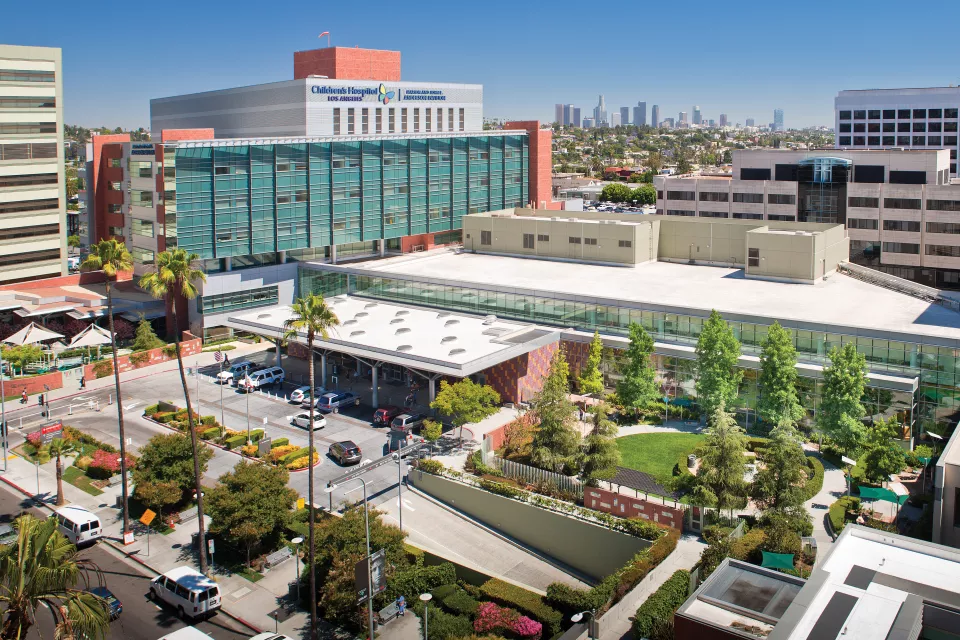
All Children’s Hospital Los Angeles locations are open.
Wildfire Support Line for Current Patients, Families and Team Members:
323-361-1121 (no texts)
8 a.m. - 7 p.m.


The lymphatic system is a component of the body’s circulatory system. It transports and processes the fluids that exist outside of the bloodstream. Because of the role of the lymph nodes, the lymphatic system is also a part of the immune system.
Lymphatic vessels connect lymph nodes and the organs of your body to each other. When they’re functioning correctly, these vessels are like small pipes carrying lymphatic fluid back toward your heart. Sometimes something goes wrong with these pipes during development, and the lymphatics malform. When this happens, they can act more like pools than pipes: fluid can get in, but it can’t get out.
These malformations may vary in appearance and symptoms depending on type and location. Lymphatic malformations may involve any area of the body. They are most common in the head and neck areas, but can appear anywhere. Large ones near the skin usually become symptomatic in the first few months or years of life, but deeper lymphatic malformations can occasionally stay invisible for years or decades.
Since lymphatic malformations are often connected to the immune system, they can become symptomatic during times of infection elsewhere in the body. Lymphatic malformations of the neck are particularly known for swelling and becoming tender after upper respiratory infections or ear infections.
Lymphatic malformations tend to grow deep beneath the surface, usually between the overlying skin and the underlying musculature. They may cause asymmetry, distortion and even overgrowth of the body parts where they occur. A lymphatic malformation of an extremity is frequently associated with swelling of the limb (known as lymphedema).
Lymphatic malformations are usually divided into three categories depending on their size. When the malformation consists of very large pockets of fluid, they are referred to as macro-cysts. When the pockets of fluid are very tiny – almost like little bubbles – they are known as micro-cysts. When the pockets are microscopic, they are called mass-like. Each type responds to different therapies in different ways, and present their own unique challenges; when micro-cysts form near the skin for example, they can often form small discolored vesicles that may ooze fluid or even bleed.
You/your child will meet with the VAC team during the initial clinic visit for a comprehensive review of the medical history, any imaging studies and/or laboratory tests that have been performed, and a complete physical examination. The medical specialists will then confer and diagnose the condition and propose a treatment plan.
Additional testing may include:
Lymphatic malformations typically do not go away without treatment, which varies with the type, size, and location.
Treatment options include:
Sclerotherapy (also known as embolization) is the treatment indicated for treatment of macro-cystic lymphatic malformations and many micro-cystic malformations. This is the process of instilling an irritating material into the dilated lymphatic channels, with the goal of causing them to scar down and shrink away. This procedure is done by the Interventional Radiologist while the patient is under sedation or anesthesia. In most cases, this is an outpatient procedure, and the patient goes home after an hour of observation. Some patients may need to be admitted to the hospital if the lymphatic malformation is located in a critical area, or is so large as to require multiple treatments over consecutive days. In order to ensure the safety of each treatment, multiple sessions are usually required to completely treat lymphatic malformations with sclerotherapy.
Surgical removal of a micro-cystic lymphatic malformation may be indicated if it is causing difficulty in function, is causing pain, and is safely accessible.
Sirolimus affects the way that certain cells grow and divide, has been proven to be effective in the treatment of micro-cystic and mass-like lymphatic malformations. When utilized, it is prescribed and managed by a Hematologist/Oncologist as it requires occasional blood tests to ensure proper dosage.
Laser therapy may be helpful if there are superficial vesicles on the skin that weep fluid or blood, or that lead to recurrent pain and infection.
If the lymphatic malformation has a component in the skin itself, it may present with tiny blister type lesions which may periodically weep clear fluid. These areas may become infected locally. More extensive infection of the skin and tissues under the skin are known as cellulitis and when present may require treatment with antibiotics. Spontaneous bleeding into the lymphatic malformation may also occur with macro-cystic and micro-cystic malformations, causing pain and swelling.
More serious and rare presentations of lymphatic malformations include: